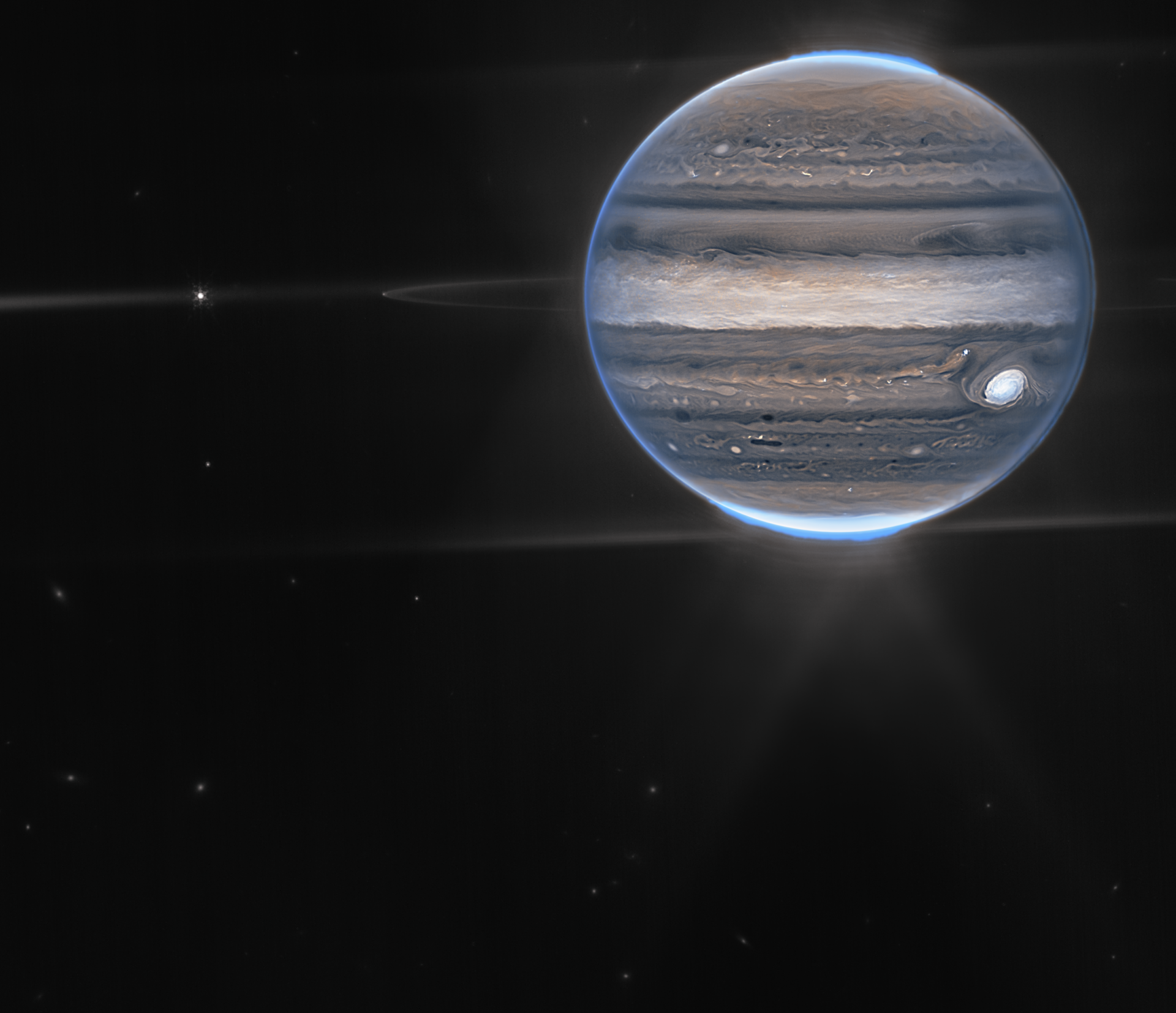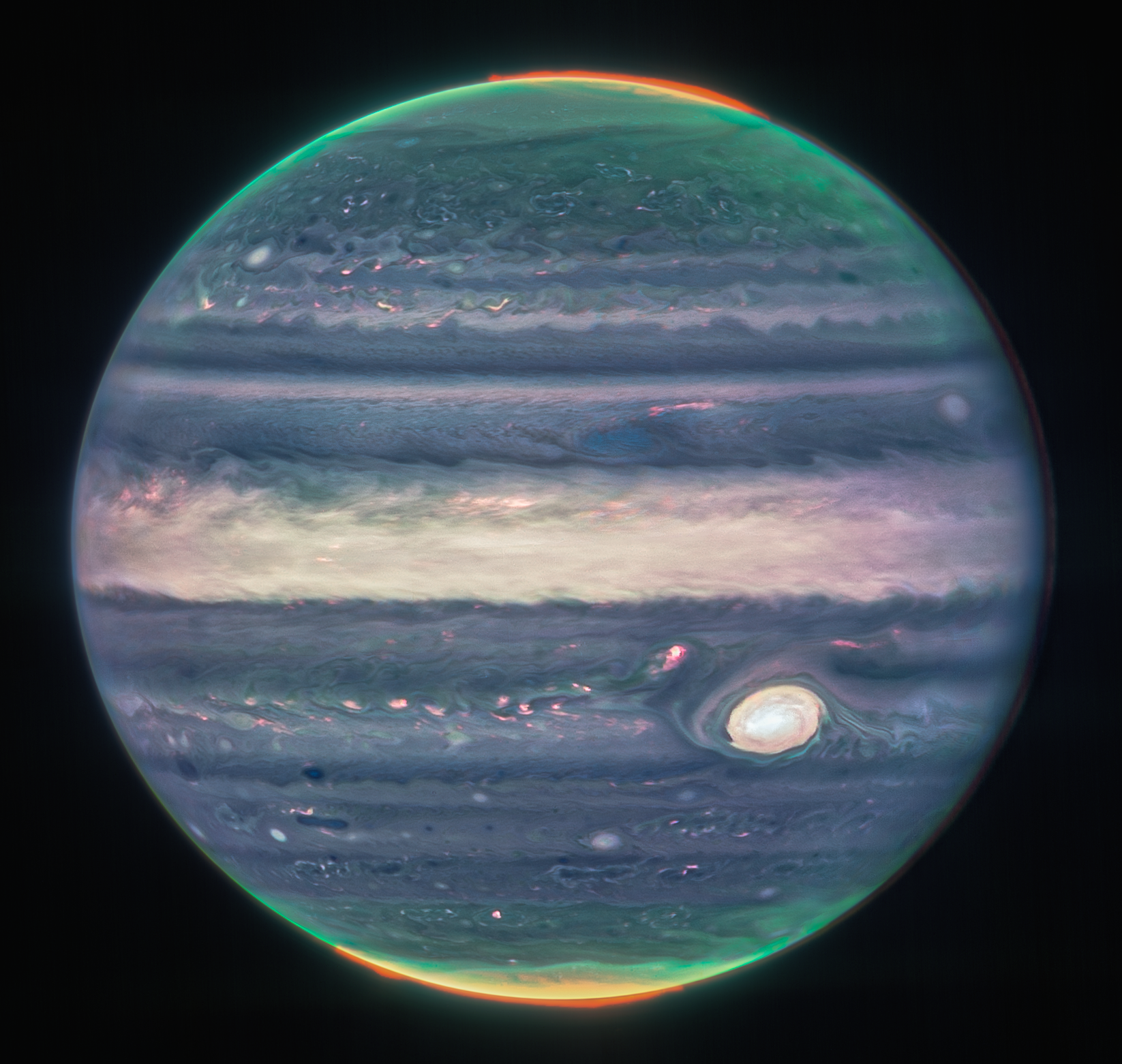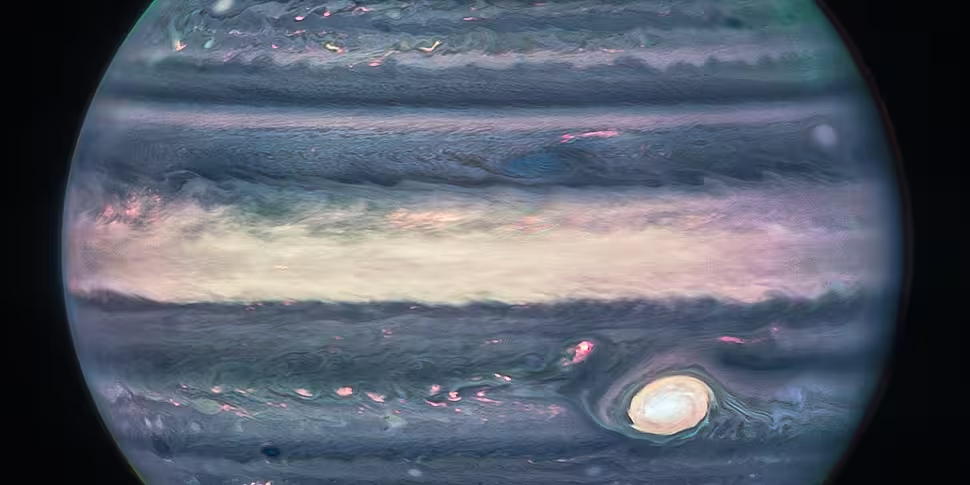We're seeing Jupiter in an entirely new light, literally, as a result of the James Webb Space Telescope.
That's according to space commentator Leo Enright, who was responding to new images of the planet.
The two images come from a Near-Infrared Camera, which has three specialised infrared filters.
But since infrared light is invisible to the human eye, the light has been mapped onto the visible spectrum.
Leo told The Hard Shoulder why this is so important.
"The main point of this telescope is to see far, far, far into the past - to the edge of the universe when time itself began.
"However what's dramatic about this new image is that this demonstrates that not only can this telescope do that really far away stuff - but they can even point it at objects in our own neighbour.
"That's quite an achievement, because remember planets are moving.
"They're not the stars fixed in the sky that we look at through telescopes - planets move.
"And so it was quite an achievement to point the telescope at this planet, Jupiter, and get this extraordinary image".
 One of the new images of Jupiter. Picture by: NASA, ESA, CSA, Jupiter ERS Team; image processing by Ricardo Hueso (UPV/EHU) and Judy Schmidt.
One of the new images of Jupiter. Picture by: NASA, ESA, CSA, Jupiter ERS Team; image processing by Ricardo Hueso (UPV/EHU) and Judy Schmidt.He said the colour of these images is different to what we're used to.
"We're seeing Jupiter in an entirely new light, that is literally the case.
"We're seeing it through infrared wavelengths, these are wavelengths that our eyes can't see.
"But the Webb Telescope can see... they've taken these infrared images and they've turned them into something that our eyes can recognise.
"It is Jupiter - we can recognise that immediately - but the colouring is different because we're seeing it in the infrared."
The other interesting piece is how these images actually came about.
Judy Schmidt, a longtime image processor based in California, processed these new views.
She has no formal educational background in astronomy.
 Scientist Judy Schmidt of Modesto, California. Picture supplied by: NASA
Scientist Judy Schmidt of Modesto, California. Picture supplied by: NASAHowever she came third in a European Space Agency (ESA) contest 10 years ago for an image of a newborn star.
Since that contest, she said she has been working on telescope data as a hobby.
"Something about it just stuck with me, and I can't stop. I could spend hours and hours every day."
 A composite image of Jupiter from three filters – F360M (red), F212N (yellow-green), and F150W2 (cyan). Picture by: NASA, ESA, CSA, Jupiter ERS Team; image processing by Judy Schmidt.
A composite image of Jupiter from three filters – F360M (red), F212N (yellow-green), and F150W2 (cyan). Picture by: NASA, ESA, CSA, Jupiter ERS Team; image processing by Judy Schmidt.Asked about her guiding philosophy, she said: "I try to get it to look natural, even if it's not anything close to what your eye can see".
The James Webb Space Telescope is the world's largest and most complex space science telescope ever built.
It is an international program led by NASA with the European Space Agency (ESA) and the Canadian Space Agency.









